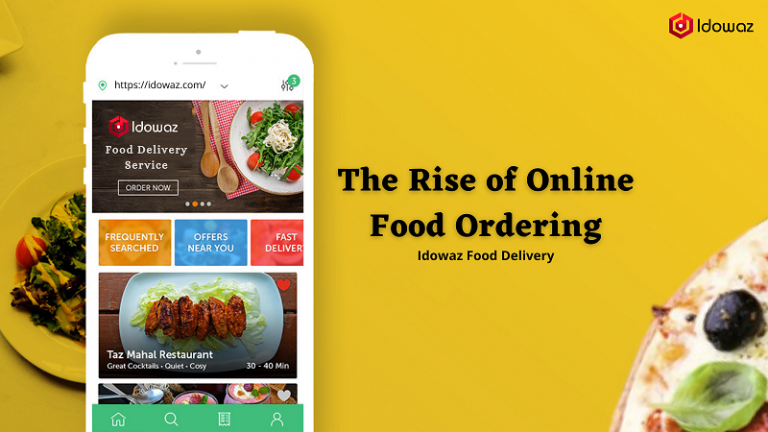The time is running so fast so the lifestyle of consumers is changing too. Let’s talk about How Eating Habits Influencing Meal Delivery.
We identified the 16 trends regarding food delivery consumer behavior:
• Digital Power
• Do It Yourself
• Individualization
• Less Food Waste
• Nostalgia and Authenticity
• New Experiences Linked to Globalization
• More Transparency
• Ready to Eat
• Proximity
• Search for Naturalness
• Search for New Consumption Opportunities
• Sustainable Food
• Particular Food Sources and Communities
• Health and Well-Being Food
• Reduced Consumption of Animal Proteins
• Strategic Consumer
DIGITAL POWER:
The digital revolution is impacting all sectors, including the food sector. Digital is transforming consumers’ eating habits in all the stages preceding or following the act of purchasing:
- Research and sharing of information (comparators, databases, geolocation, and connected food),
- The act of purchase (click & buy),
- And services associated with the purchase such as delivery and post-purchase assessment.
This emerging trend has already started to take root in our habits (drive success) and could fundamentally change our relationship with food.
DO IT YOURSELF:
The economic crisis of 2008 and the following led to the development of new eating habits for the midday break.
This phenomenon is coupled with the desire, for some consumers, to control the content of their meal and the way in which it has been prepared.
Finally, “Home Cooked Food” also responds to a search for social ties and conviviality.
LESS FOOD WASTE:
More and more consumers are getting involved in the fight against food waste for various economic, environmental, and societal reasons.
This generates changes in consumption patterns but also in production methods since all stakeholders in the food industry are concerned by the subject.
NOSTALGIA AND AUTHENTICITY:
Modern society is characterized, among other things, by individuals in need of benchmarks who perceive the future as uncertain, evolving in a more globalized and complex world.
Their need for reassurance (security) and reliance (identity) is reflected in their consumption behavior:
- They seek authenticity,
- Appreciate nostalgic brands
- And “old” (or traditional) products.
NEW EXPERIENCES RELATED TO GLOBALIZATION:
The citizens of any country are attached to their gastronomic heritage but do not miss an opportunity to enjoy the best of other culinary cultures.
This perpetual search for “eating well” truly defines them; they are also the first to talk about food even when they are at the table.
Also, the increase in cultural exchanges and information tends to develop this openness to the outside world.
In particular for the younger generations who are looking, in addition to innovative products, for foodstuffs that are respectful of those who produced or developed them?
MORE TRANSPARENCY:
Faced with recent food scandals (Stray dog meat, etc.), Consumers have developed a certain mistrust of standardized products.
Educated Consumer now looks for more transparency on the origin, nutritional value, composition, and production conditions of the products they buy.
READY TO EAT:
The urban lifestyle and the increasing demand for speed in modern society have restricted time.
People spend on buying and preparing meals. They aspire to more time for leisure and seek convenience and time-saving in their food intake.
Which they find in particular in the consumption of service foods (ready meals, sandwiches, catering and home delivery, etc.).
PROXIMITY:
People are faced with concerns related to globalization and moderate economic growth. Consumers favor proximity in terms of:
- Food.
- Encouraging local production
- Regional products.
- And direct sales.
The desire to recreate the city-countryside link has reappeared strongly in recent years (in a context of a long trend towards urbanization).
NATURALITY RESEARCH:
Naturalness, for a large part of consumers, implies an absence of “chemical product”.
Indeed, consumers pay attention to the composition of food and prefer those without artificial elements (preservatives, additives, artificial colors, etc.).
Customers choose to avoid products derived from biotechnology, or if used pesticides in agriculture.
SEARCH FOR NEW CONSUMPTION OPPORTUNITIES:
The food model like Idowaz is a specificity that remains firmly anchored in mentalities and practices.
However, eating behaviors have evolved and the consumer aspires to explore new consumption opportunities.
He further splits his meals (snacks), simplifies his food intake (single dish, ready-to-eat, brunches) and appreciates the enrichment of his “customer experience” thanks to many brands that offer different experiences in the same place.
SUSTAINABLE FOOD:
Consumers are looking for more sustainable food. While perceptions of sustainability differ from one individual to another.
The diversity of consumer practices and expectations has made it possible to develop an alternative food offer. Now you might be understanding How Eating Habits Influencing Meal Delivery.
SPECIAL FOODS AND COMMUNITIES:
More and more consumers want products adapted to their cultural characteristics and corresponding to the values of the community to which they belong, whether religious or not.
HEALTH AND WELL-BEING FOOD:
Following in particular the health crises and the dissemination of public health messages.
Now consumers have become aware of the link between their diet, their health, and their well-being.
Some consumers thus seek food to reduce the risk of disease and / or improve their performance (physical, intellectual).
REDUCED CONSUMPTION OF ANIMAL PROTEIN:
The consumption of animal proteins is decreasing as in other “Developed Countries”.
For sometimes very varied reasons (nutritional messages from the early 1980s, high cost, food scandals, ideology, the evolution of the Human-Animal relationship, environmental considerations, etc.).
Now consumers are aware of the search for alternative sources of protein.
STRATEGIC CONSUMER:
Confronted with very strong budgetary constraints, consumers seek to take advantage of good deals and low prices, while continuing to indulge themselves.
He, therefore, develops strategic behaviors. On the question of price, the internet and e-comparators have quickly become decisive in the search for the best value for money, just like advertising prospectuses in the past.
So now you must have understood that How Eating Habits Influencing Meal Delivery. The future of Food delivery is radiant.




